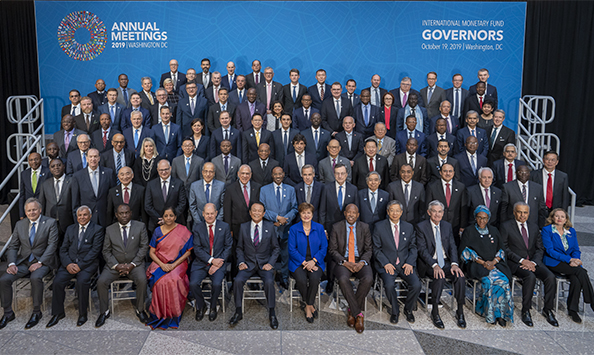The International Monetary Fund Staff as part of an active work program on issues related to debt restructuring has outlined the re-use of cash payments, buy backs or collateral as part of a debt restructuring offer.
These conclusions resulted from a number of earlier papers and a recently published paper titled: Examining the economic case for Debt and Debt Service Reduction Operations (DDSROs).
The IMF made these statements in a press release issued on March 16, 2021.
The Fund notes that when the DDSR policy began in the 1990s, it supported members’ Debt and Debt Service Reduction operations by setting aside a portion of the Fund’s financing to member countries involved to make cash payments, debt buybacks and collateral purchases.
Cash payments and collateral are alternative financial instruments used to lower the risk of a bundle of securities that are offered to creditors in debt restructuring operation.
Cash payments made directly as a part of the securities bundle. Collateral purchases made indirectly to reduce the risk of payments promised to creditors. Market-based buybacks, on the other hand, offer a medium to reduce debt outstanding without the need to negotiate with creditors.
However, the policy halted in 2000, two years after its last use. The Fund found that at the time, it was not economically justified and thus called for its discontinuity. The original paper examines the relevance of the Fund’s 1990s policy on such operations to the present, post-COVID context.

Conditions for support by the Fund
The findings from the report indicate that the IMF could support member’s use of buybacks, cash payments or collateral purchases in the context of a Fund-supported programme. Meanwhile, this may only work provided some pre-existing conditions hold.
Firstly, the Fund could support members where debt restructurings using cash payment, collateral or buybacks provide significant efficiency gains. In Comparison to debt restructurings that do not rely on such instruments. However, the latter may be based on a regular Fund-supported program.
Another condition that must be met is that there should be grounds for an adequate cushion of non-multilateral debt remaining after the operation. Although the paper provides these conditions for use of these instruments to solve balance of payment, these conditions are narrow. Meanwhile, the IMF notes that it has not received any request for such support at this time.
This notwithstanding, the IMF indicates that a member could use its general balance of payment support if it wants to finance DDSROs under an IMF supported program.
Why need is not required for the DDSR policy now
Suggestions are that the underlying conditions that motivated the use of the DDSR policy differ from the present time.
Accordingly, the policy came about as a result of the political and economic factors of the time. These circumstances led to the provision of deep debt relief on a voluntary basis. While protecting the interests of creditors of various commercial banks to the extent possible.
The contention is that, “the original justification for a dedicated DDSR policy—enhancing the Fund’s catalytic role by signaling official support for DDSROs—no longer appears convincing (if it ever was).”
As it stands now, the IMF can signal support for a debt restructuring operation through a Fund-supported programme. This is done as the operation unfolds, so long as it is expected to achieve desired degree of debt relief. Therefore the Fund does not require any additional signaling to arrive at this outcome.
“While a systemic sovereign debt crisis is not in staff’s baseline scenario. It remains critical to thoroughly review the toolkit available to address a potential crisis. The Fund and its staff will continue to make progress in this area in order to best serve its members.”
READ ALSO: ISSER Boss expects BOG to maintain the policy rate





















